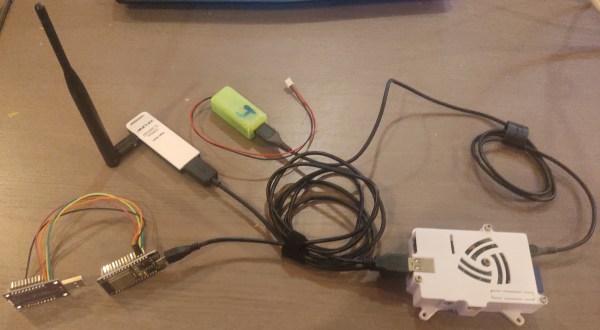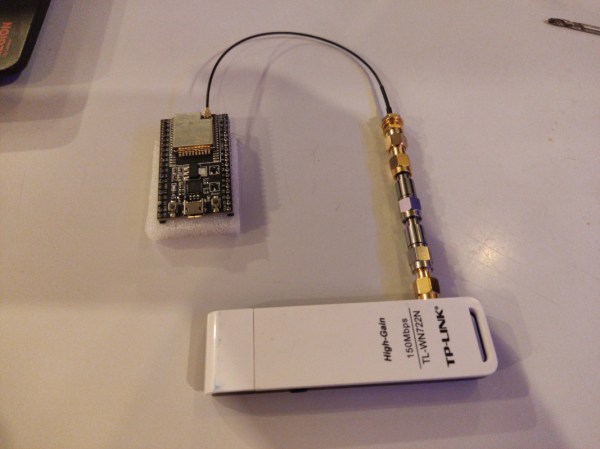
As part of a team reverse-engineering the binary blob driver for the ESP32’s WiFi feature at Ghent University, [Jasper Devreker] saw himself faced with the need to better isolate the network packets coming from the ESP32-under-test. This is a tough call in today’s WiFi and 2.4 GHz flooded airwaves. To eliminate all this noise, [Jasper] had to build a Faraday cage, but ideally without racking up a massive invoice and/or relying on second-hand parts scavenged from eBay.
We previously reported on this reverse-engineering project, which has since seen an update. Although progress has been made, filtering out just the packets they were interested in was a big challenge. The solution was a Faraday cage, but on a tight budget.
Rather than relying on exotic power filters, [Jasper] put a battery inside a Faraday cage he constructed out of wood and conductive fabric. To get Ethernet data in and out, a fiber link was used inside a copper tube. Initial testing was done using a Raspberry Pi running usbip and a WiFi dongle. The Faraday cage provided enough attenuation that the dongle couldn’t pick up any external WiFi signals in listening mode.
The total cost of this build came down to a hair over €291, which makes it feasible for a lot of RF experiments by hobbyists and others. We wish [Jasper] and the rest of the team a lot of luck in figuring out the remaining secrets of Espressif’s binary WiFi blob using this new tool.













